Originally I was going to call this, “better keyword research with the synonymous intent method,” but alas, I opted for the mystery headline.
The two most common mistakes in keyword research I see are:
- doing keyword research after you’ve already written a post, to “SEO” it
- only looking at monthly search volume estimates to determine what you should write about next
Most keyword research suffers from being one dimensional. You generate ideas and use volume per keyword to decide what to write about or include in your post.
This is only fine if you don’t care about organic traffic. Say you are only looking for ideation and brainstorming based on a general sense of what users think about, this can be a great exercise.
But for ranking, it’s a costly mistake that only leads to frustration when it ultimately doesn’t work for you.
Instead of looking at keywords to go after, you want to look at topics (often called keyword clusters). And not just phrase match, but synonymous intent as well.
Introducing the synonymous intent method
It’s a phrase I just made up. But there are two types, overarching or specific.
Specific synonymous intent means someone could be searching for “blue shiny widgets” or they could be searching for “steel gadget components,” it’s two ways of saying the same thing, like headstones and tombstones.
Overarching synonymous intent means that someone could be searching for two completely different things with the same overall goal. Think “keto diet” vs “weight watchers alternative” with both having research intent around losing weight.
For our purposes, we’re more looking at specifics, but overarching comes into play the more we zoom out to compare opportunities and craft an overarching content strategy.
Estimating a keyword cluster opportunity
If you run a search in SEMRush’s Keyword Magic Tool on “change behavior how” you will get something that looks like this:
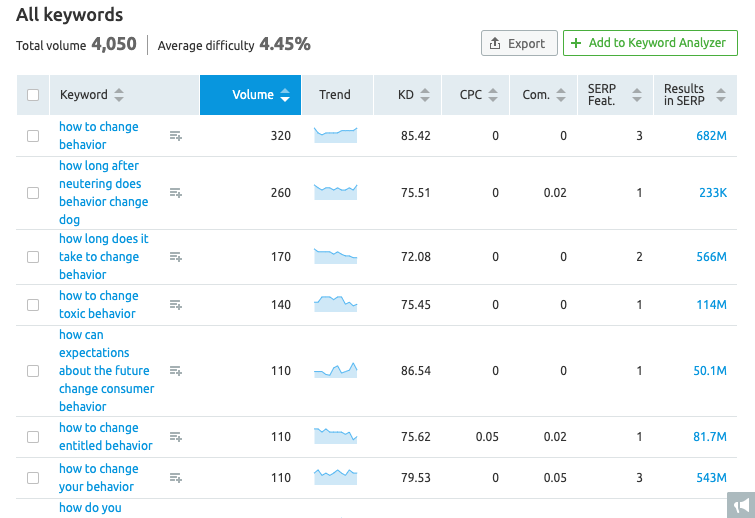
You’ll notice some are not relevant to the topic, “how do you change your behavior.” We can exclude those keywords that aren’t related to someone searching for how to change themselves: dog, consumer, employee, child.
And then we can look at the search volume by phrase match:
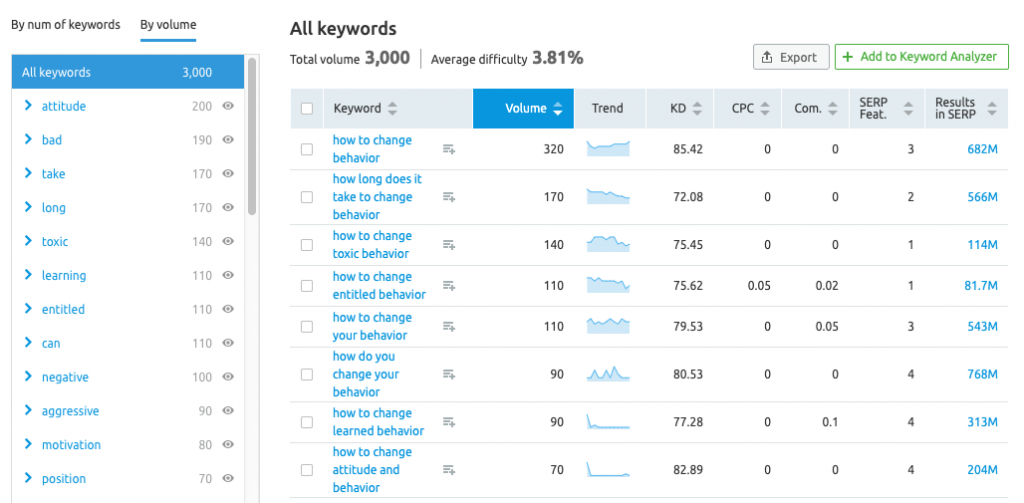
We can see that keyword difficulty (KD column) is high at a range of 72 to 85 or so. We can see that most searches have about 2 to 3 SERP features (other Google properties). And looking at the search results, we can see most of what is ranking is well established publishers.
At first glance, it looks like a bad idea
In this case this would be a low value low priority target from an SEO standpoint.
The potential value is *maybe* 750 users per month at 25% of the total volume of 3,000. That’s if you can write a comprehensive guide that quickly satisfies all the underlying intent (changing attitude, bad, toxic, negative, entitled, aggressive behaviors) and rank in a top position for most of the higher volume phrases and longer but lower volume phrases.
If you take the threshold of phrases with volume over 50 searches per month, you’ll see there are only 1600 or so left, cutting your potential value in half again.
What a good second glance looks like
In order to decide whether to target this topic, think hypothetically about what you’d do if you had to target it.
Imagining we wanted to target this keyword cluster, you’ll want to look at other queries related to changing behavior along those included specifiers (attitude, bad, toxic, negative, entitled, aggressive behaviors).
Some of the sub-phrasing is related to attitude, toxic mindsets, and entitlement. So let’s see what related phrases around “changing mindset” show us:
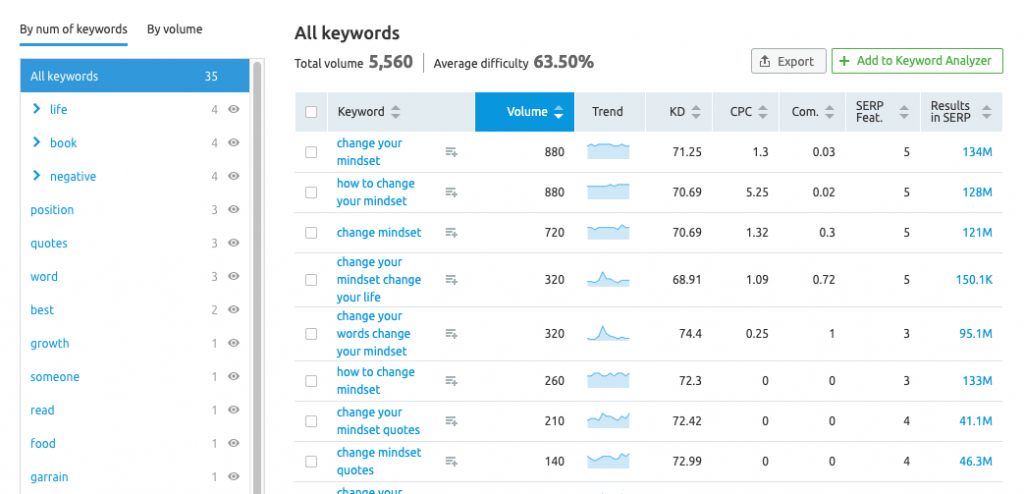
This is interesting, but we have to be careful. A lot of quotes type searching in there, and possibly some book title searches. But it’s partially promising.
Higher search volumes even with the 50 volume cutoff at 5500 searches and lower keyword difficulties at 67 to 73.
Unfortunately though, the SERP features (google properties like knowledge panel, people also ask, image cards, etc.) are quite high, about 4 to 5.
So lets take a look at what SEMRush saw in June that made them list 5 SERP features:
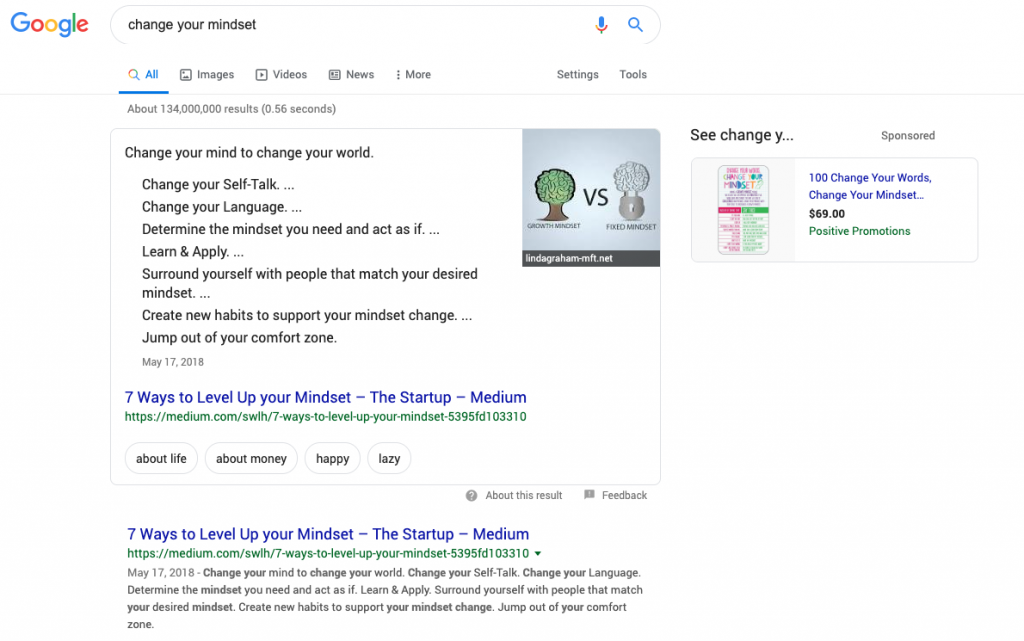
What I see now in incognito
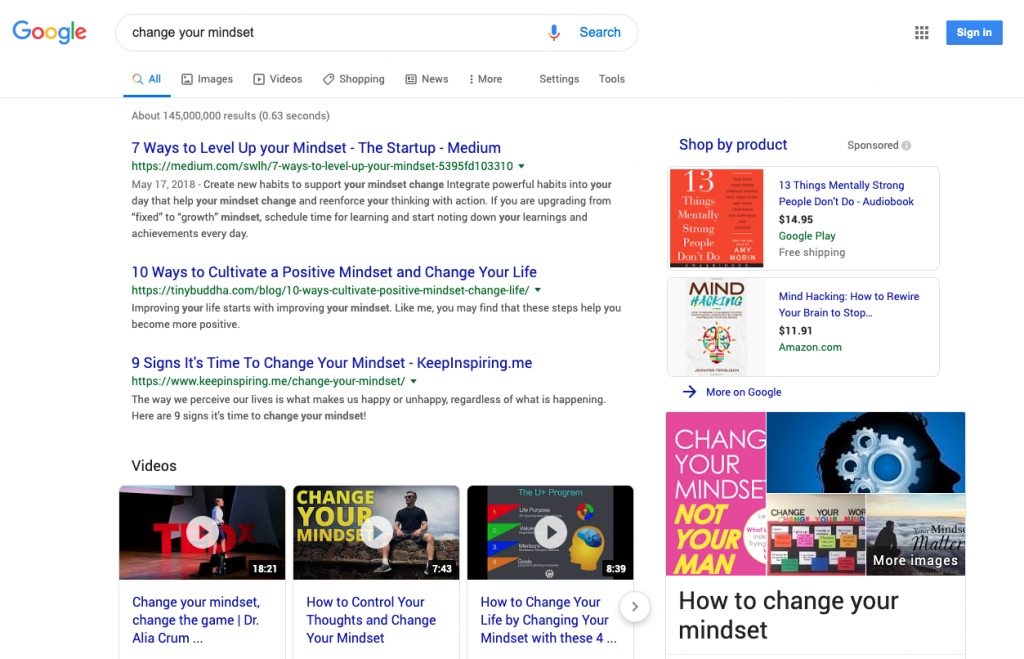
I don’t mind this. There’s video opportunity, knowledge box, book shopping, and a medium post ranks first.
So at second glance, we can probably 4 to 5x our traffic by rinsing and repeating this synonymous intent process. We can find more lower difficulty phrases where the SERP features aren’t too bad, or can be leveraged to our benefit with in-SERP SEO.
Now that we have a rough idea of a quantifiable value and cost associated with going after this topic, we can compare it to other opportunities and decide where / if it fits in a data-driven content strategy.

Articles referencing this one